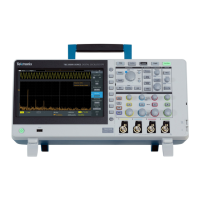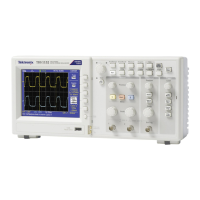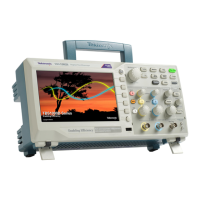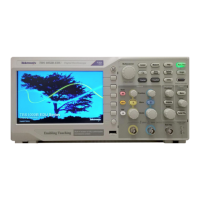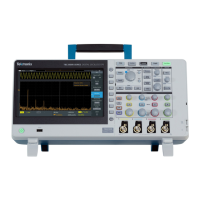





Do you have a question about the Tektronix TBS2000B Series and is the answer not in the manual?
| Brand | Tektronix |
|---|---|
| Model | TBS2000B Series |
| Category | Test Equipment |
| Language | English |
Summary of precautions for safe operation, avoiding injury, and preventing product damage.
Unpacking the oscilloscope and checking standard accessories.
Step-by-step guide for installing license files for oscilloscope features.
Specifies environmental and power conditions for instrument operation.
Instructions on how to turn the oscilloscope on and off safely.
Guides on probe connection, types, and compensation procedures.
Covers changing language, date/time, and using help features.
Explains signal sampling and storage for waveform creation.
Explains the role of triggers in stabilizing waveforms for measurement.
Adjusts coupling, bandwidth, deskew, and other channel settings.
How to adjust bandwidth to accurately display and measure frequencies.
Sets the oscilloscope to trigger on rising or falling signal edges.
Defines oscilloscope behavior in the presence or absence of a trigger.
Quickly acquires and displays a waveform by automatically adjusting settings.
Instructions on initiating and halting waveform acquisition using Run/Stop and Single.
Controls how long sampled waveform points are retained and displayed.
Plots signal amplitude of one channel against another for phase/frequency analysis.
Quickly takes common waveform measurements like frequency and period.
Uses on-screen lines to position and measure time or amplitude values.
Adds, subtracts, or multiplies channel waveforms to create new math waveforms.
Analyzes waveform data to determine component frequencies using Fast Fourier Transform.
Saves screen images, waveforms, and setups to internal memory or USB.
Loads oscilloscope settings and waveforms from memory or external files.
Manages files and folders on a connected USB drive.
Securely erases all setup and waveform information from nonvolatile memory.
Configures Ethernet connection for network access and remote control.
Configures Wi-Fi connection for network access and remote control.
Establishes direct connection for data analysis, screen capture, or control.
Updates oscilloscope software to improve functions or add new features.
Tests instrument functional modules using self-test procedures.
Run guided lab exercises and review theory directly on the oscilloscope.
Descriptions of front-panel buttons and knobs for operating the instrument.
Introduces how to navigate and use the TBS2000B menu system.
Describes connections for channels, probes, and USB devices.
Details Aux Out, LAN, and USB ports for connectivity.
Explains various icons and status indicators on the oscilloscope screen.
Adds custom labels to channels for easier identification on the display.
Lists the factory default settings applied when Default Setup is used.
Instructions on how to secure the oscilloscope using a security lock cable.
Information about the environmental impact and recycling of the product.
